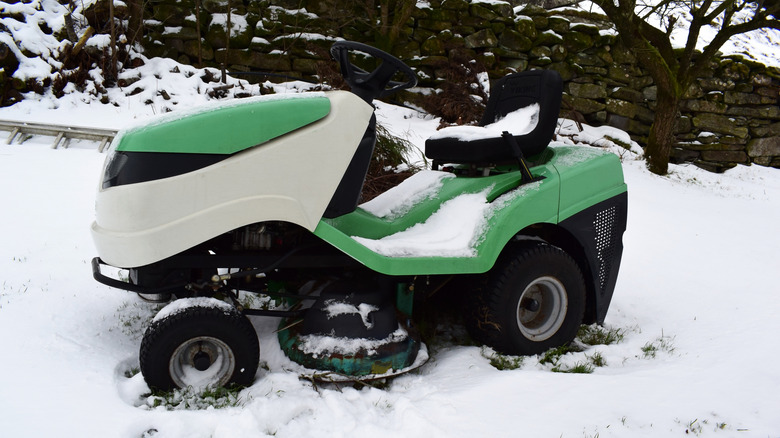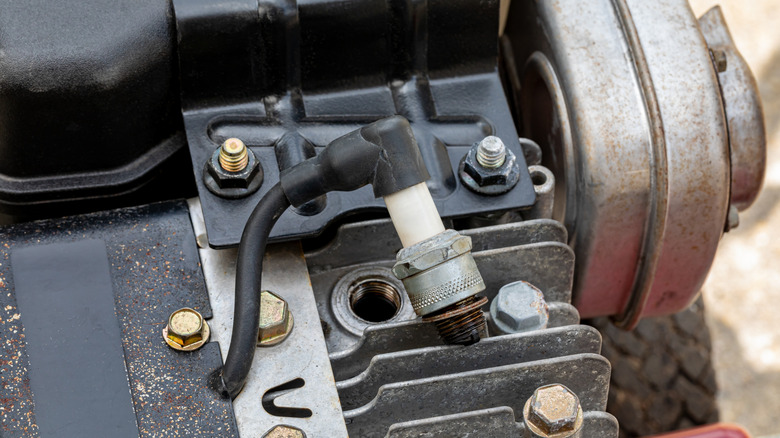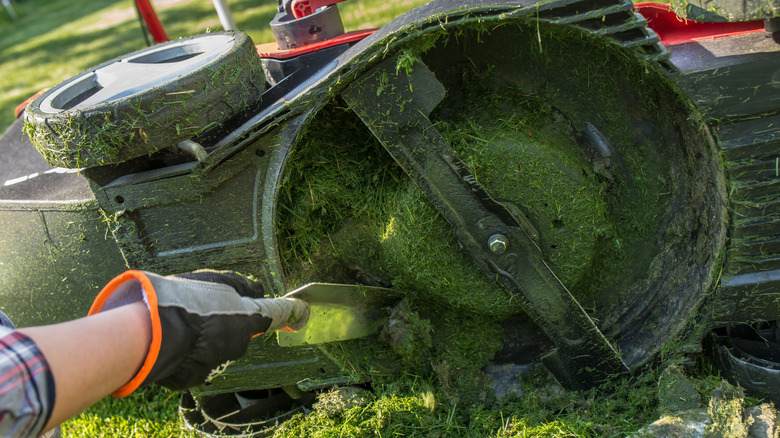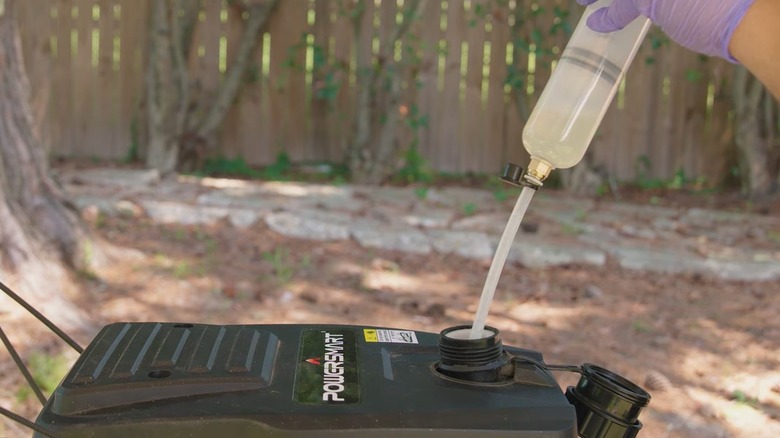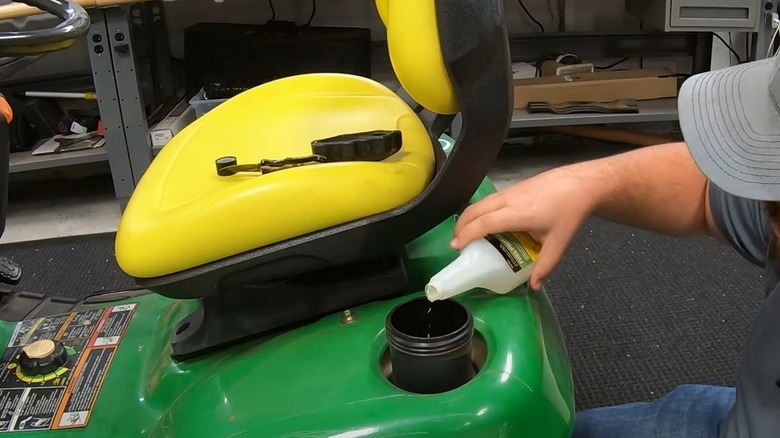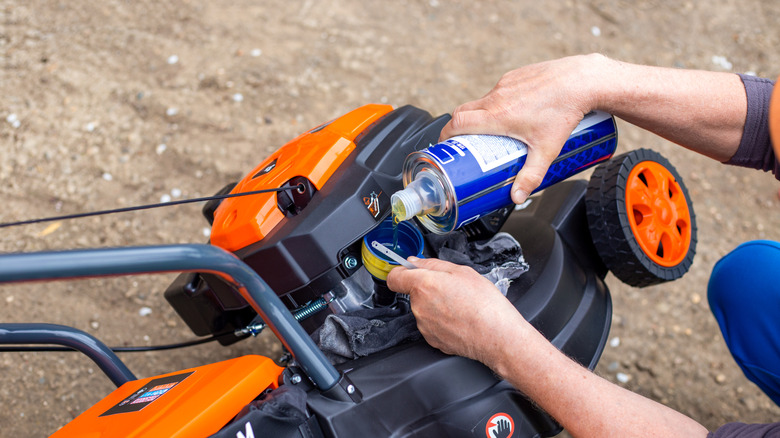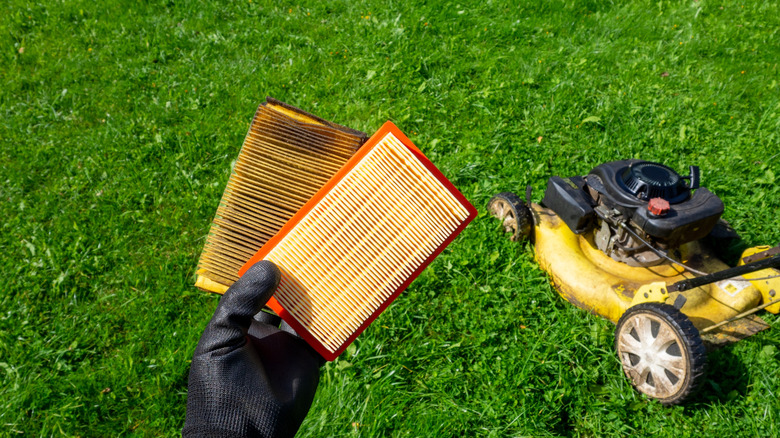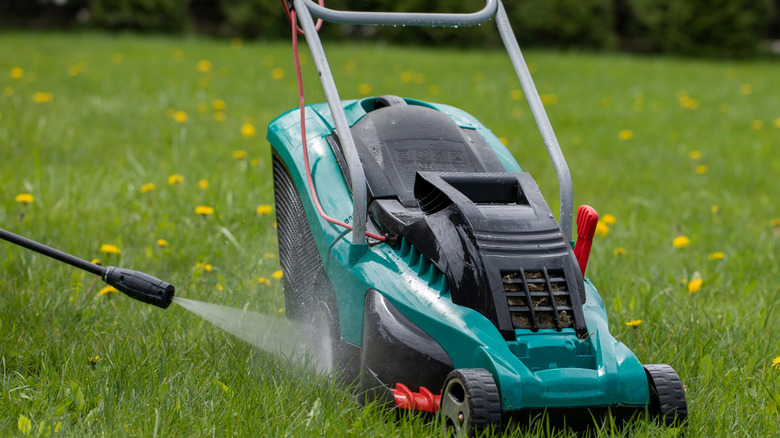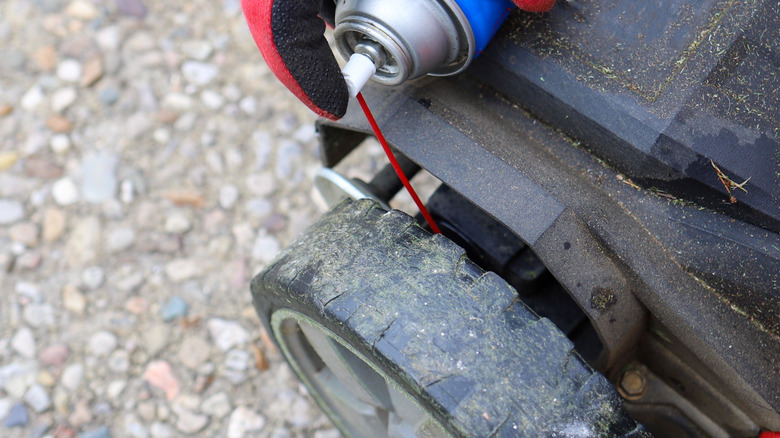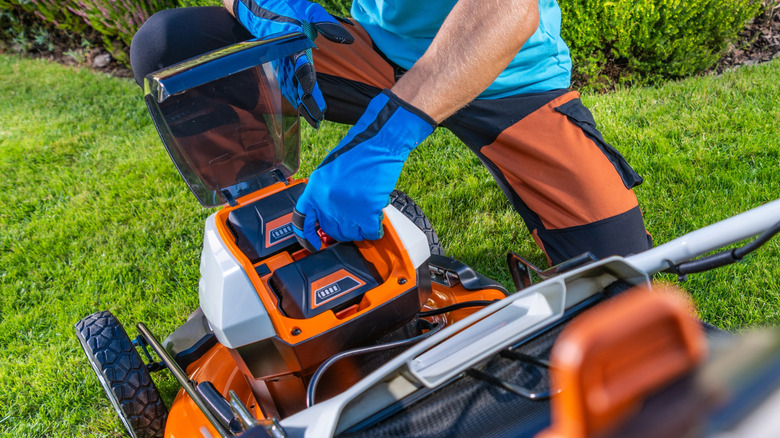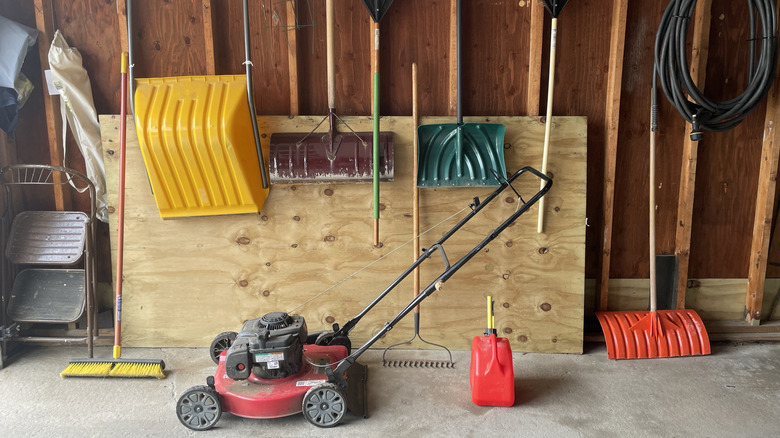10 Ways To Winterize Your Lawn Mower & Protect It Until Spring
Regardless of the type of lawn mower you use — a rider, zero-turn, or push mower — you should take care of it to ensure it stays in good condition throughout the winter. That means taking steps to winterize your mower and finding a safe storage place for it. However, there is more than one way to winterize a mower, so it's essential to review all the options to determine which is best for yours. If you've been doing lawnmower maintenance after each mow, there may be less work to do now.
Don't put off winterizing your mower, unless you want to face potentially costly issues when you pull it back out in the spring to start mowing again. Failing to take care of your mower's engine, especially, can be expensive — whether you end up having to purchase a new one or repair the engine itself. A lawn mower that's well cared for will last longer than one that you're not taking the time to winterize each year. Properly storing your lawnmower is also part of this vital process, so if you don't have a shed to put it in, you might need to improvise.
Check and clean your spark plugs
A good place to start with your winterizing project is to remove the spark plugs. You'll want to inspect them to see if they need cleaning or replacement. Also, removing and setting them aside at the beginning ensures your mower won't accidentally start while you're working on the rest of your winterization steps. Be careful not to get anything in the combustion chamber while the plugs are disconnected. Look for cracks, burned spots, and deposits to know if it's time for new plugs. Even if you check these during your lawn mower tune-ups, it's essential to look again.
Clean under the mower deck and sharpen the blade
An essential step in preparing your mower for winter is cleaning it, and you'll want to ensure that you remove all the grass from the blade and the mower deck. Grass can hold moisture, so leaving it on your mower over winter can lead to rusting. Be sure to wear gloves to protect your hands. While you're in this area, now is a good time to sharpen the blades so your mower will be ready for spring. Keeping your lawn mower in good shape throughout the mowing season is important too.
Empty the gas tank
Do not leave small amounts of gas in the tank over winter. Doing so can lead to degradation of the gas itself, but it can also gum up your carburetor and damage the fuel system. Even after just a month of sitting unused in the gas tank of your mower, the gas itself can deteriorate. Use a siphon to remove the gas from your riding mowers or tip your push mower over to empty the gas tank, and be sure to put the gas into a drain pan and dispose of it properly.
Add fuel stabilizer
If your tank is full, no need to waste all of that gas. By adding a fuel stabilizer to your tank, you can extend the life of the gas by a few months — hopefully enough to get through the winter. The most important thing to keep in mind with this step is that you can only add the stabilizer to fresh gas. Therefore, if the full tank has been sitting for a few weeks, you will still want to empty the tank — perhaps find something else you can transfer the gas to so it's not wasted.
Change out the engine oil and filter
Before you change the oil in your lawnmower, consider how long it has been since the last change. If you've run the machine for 50 hours of overall use, now is a good time to perform an oil change; if not, you can skip this step during your mower's winterization. If you do need to change the oil, now is also a good time to swap out your oil filter. If you don't perform an oil change now, ensure to remember the hours of use for when you start mowing again the following year.
Change gas and air filters, if needed
We already looked at the oil filter, but that's not the only filter that may need replacing on your lawnmower. Check the air filter to assess its condition, and replace it if it appears to be deteriorating or extremely dirty. Sometimes you can get away with cleaning the air filter and reusing the same one if it's still in good shape. Check the gas filter as well. The fuel filter protects your carburetor from debris, so it's essential to change it regularly and as needed.
Clean the visible parts of the mower
Think of your lawnmower, even your push mower, as another vehicle in your possession and treat it with the same care and respect. Hence, safely cleaning your lawn mower before winter is essential. To winterize your mower, ensure everything under your mower is clear of dirt and debris and spray it down with a hose. Use your car soap to wash the body of your mower as well. A clean machine will make you smile when you pull it back out in the fall, and will help keep rust at bay.
Lube the moving parts
From the steering wheel to the push bars, grab a bottle of something like WD-40 to lube any moving parts of your machine. Once you've sprayed lubrication on all these parts, move them around to ensure they are well-greased. This will help you avoid any locked-up components after your mower sits through the winter. Using WD-40 with your lawn mower also has rust-prevention benefits. Some places on mowers require regular greasing when you're on this step, like the front axle, deck, and mower spindles. Well-lubed spindles will help keep your mower working at its best.
Disconnect the battery
If your lawnmower has a battery, you will want to disconnect and store it before putting up your mower for the season. While a push behind mower may be light enough to move without turning it on, be sure to park your riding mower where you plan to keep it for the winter before removing the battery. Consider storing the battery inside your house, where it is in a temperature-controlled environment, to help extend its life. Don't keep it in the garage or basement (unless you have a finished basement that is temperature-regulated).
Store it properly
As for your mower itself, keep it in a shed or garage if you have the space. If you don't have a shed or garage, you can purchase a tarp or specialized cover to place over your mower, helping to protect it from the elements. Even indoors, a tarp or cover will help keep dust and debris off your mower so that it'll be shiny and ready to go come spring. You also want to ensure it's stored in an area where you won't need to move it frequently.
